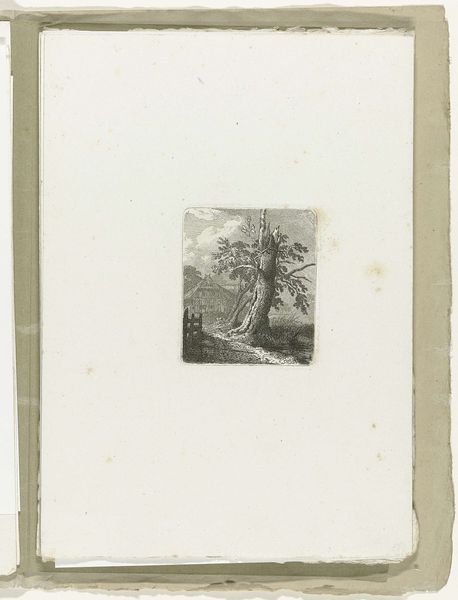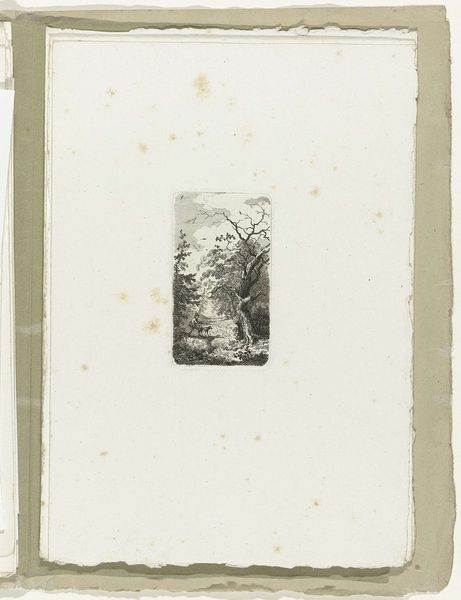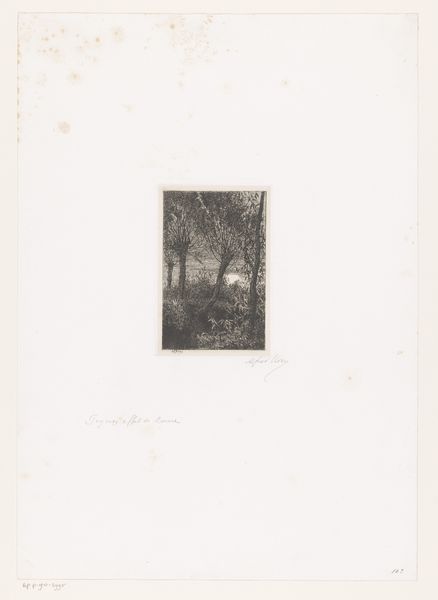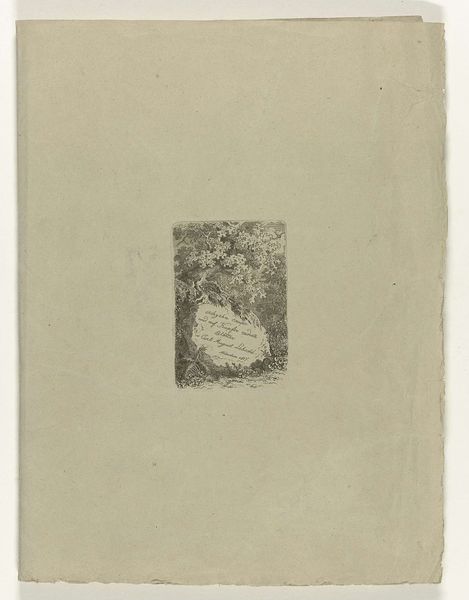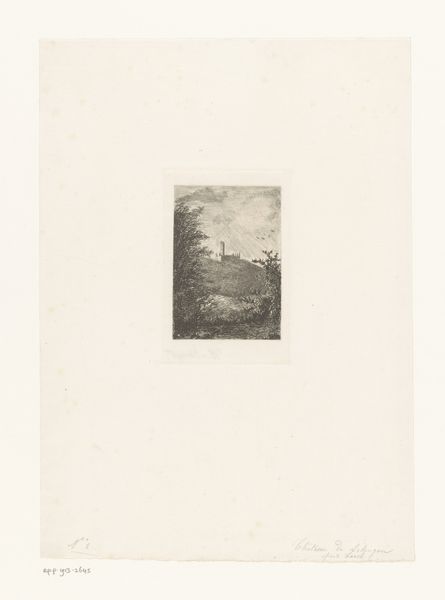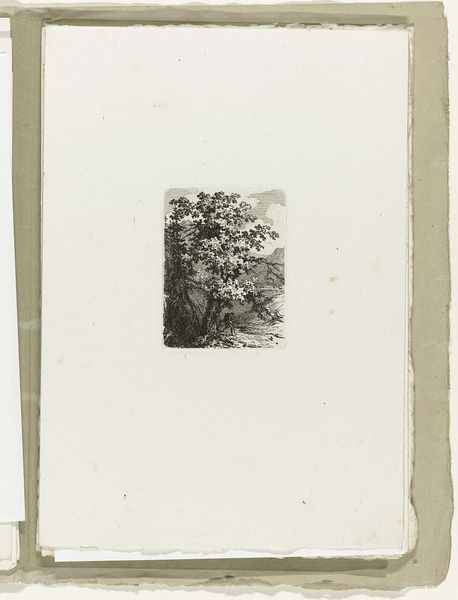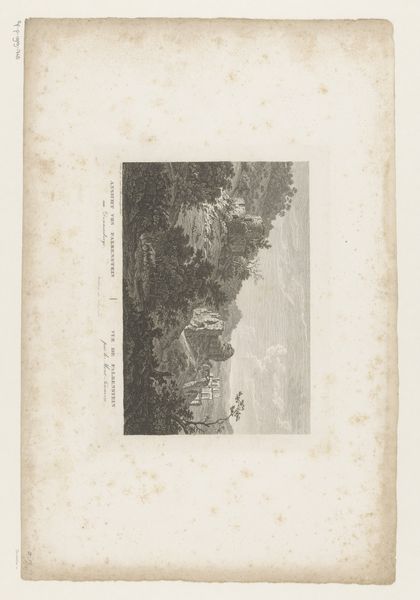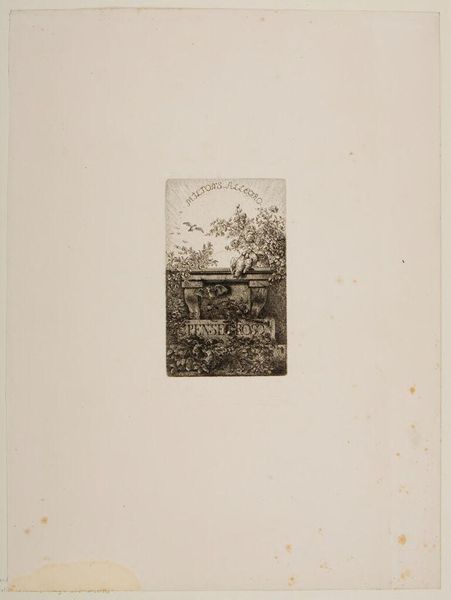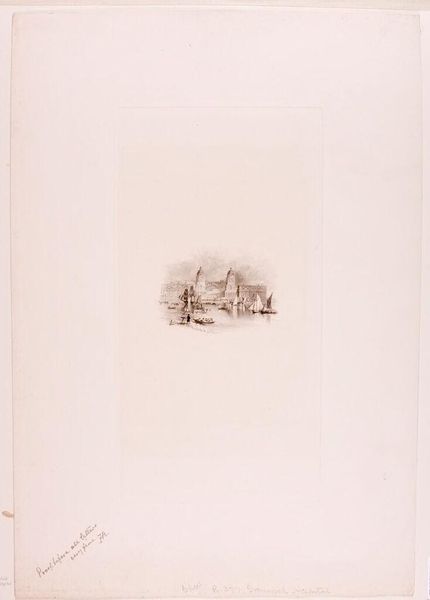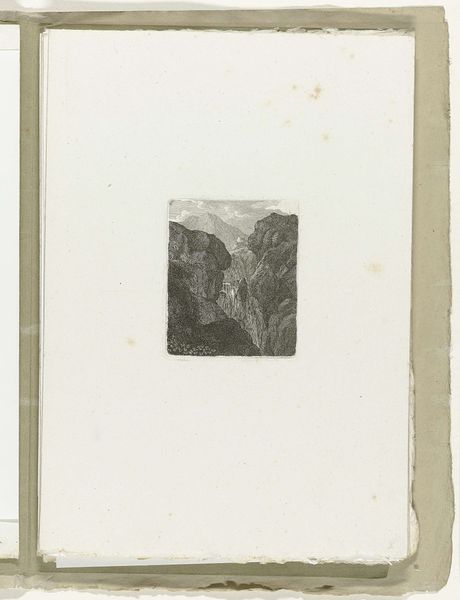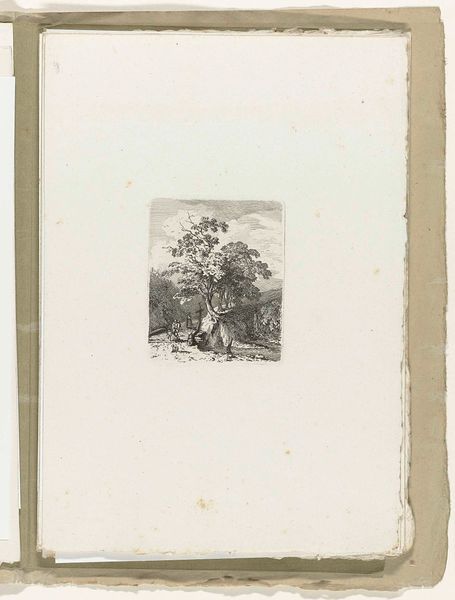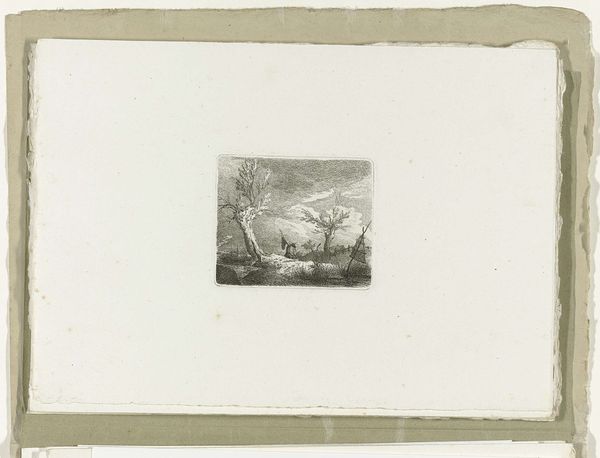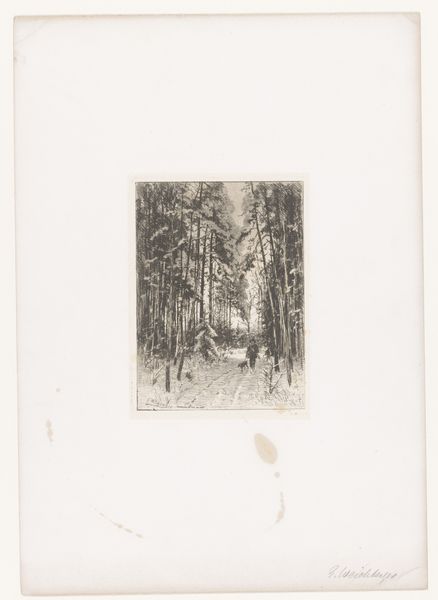
drawing, print, engraving
#
drawing
#
water colours
# print
#
landscape
#
romanticism
#
engraving
#
realism
Dimensions: height 84 mm, width 64 mm, height 280 mm, width 181 mm
Copyright: Rijks Museum: Open Domain
Carl August Lebschee made this etching of a farm well with bucket and trough sometime in the first half of the 19th century. Lebschee was working in a period of great change in Europe, especially with regard to rural life. Across the continent, systems of feudalism were being dismantled, and new farming methods were being introduced. It is interesting to see a simple farm well represented at this time. The rapid urbanisation and industrialisation of cities stood in contrast to the enduring traditions of the countryside. Was Lebschee's image a form of cultural commentary? Was it self-consciously conservative, perhaps looking back to an idealised version of rural life? These are the kinds of questions a social historian might ask. By researching the archives of the period, we can gain insights into the social conditions that shaped artistic production. The meaning of art is contingent on social and institutional context.
Comments
No comments
Be the first to comment and join the conversation on the ultimate creative platform.
